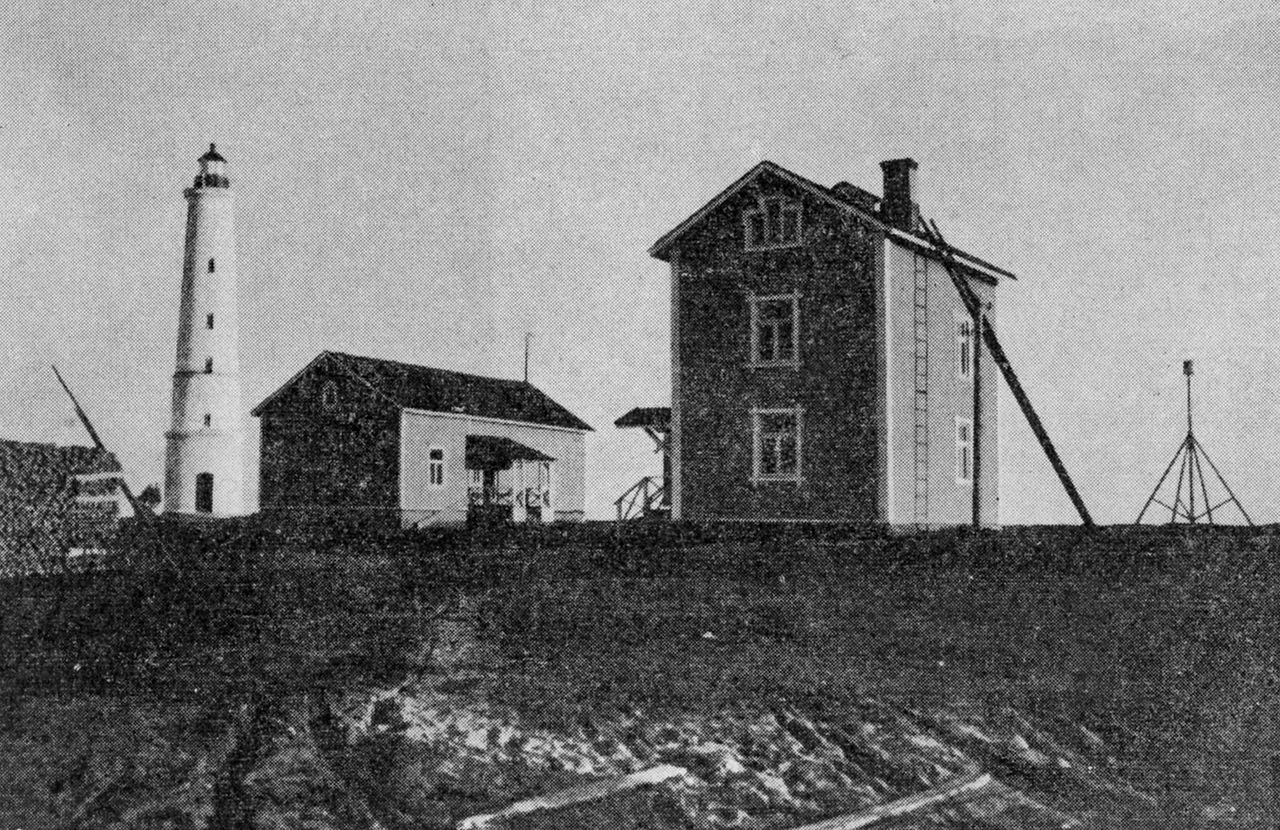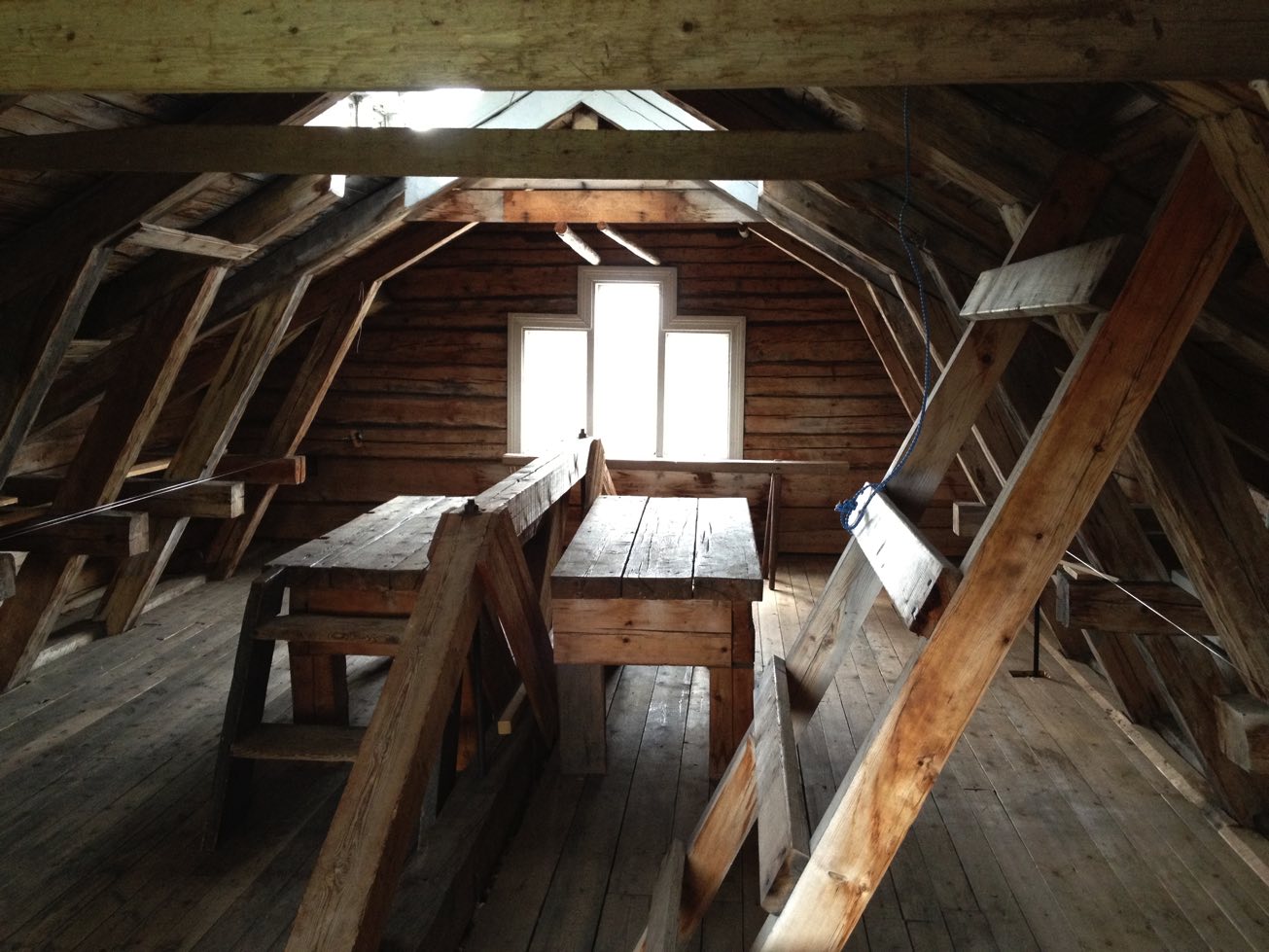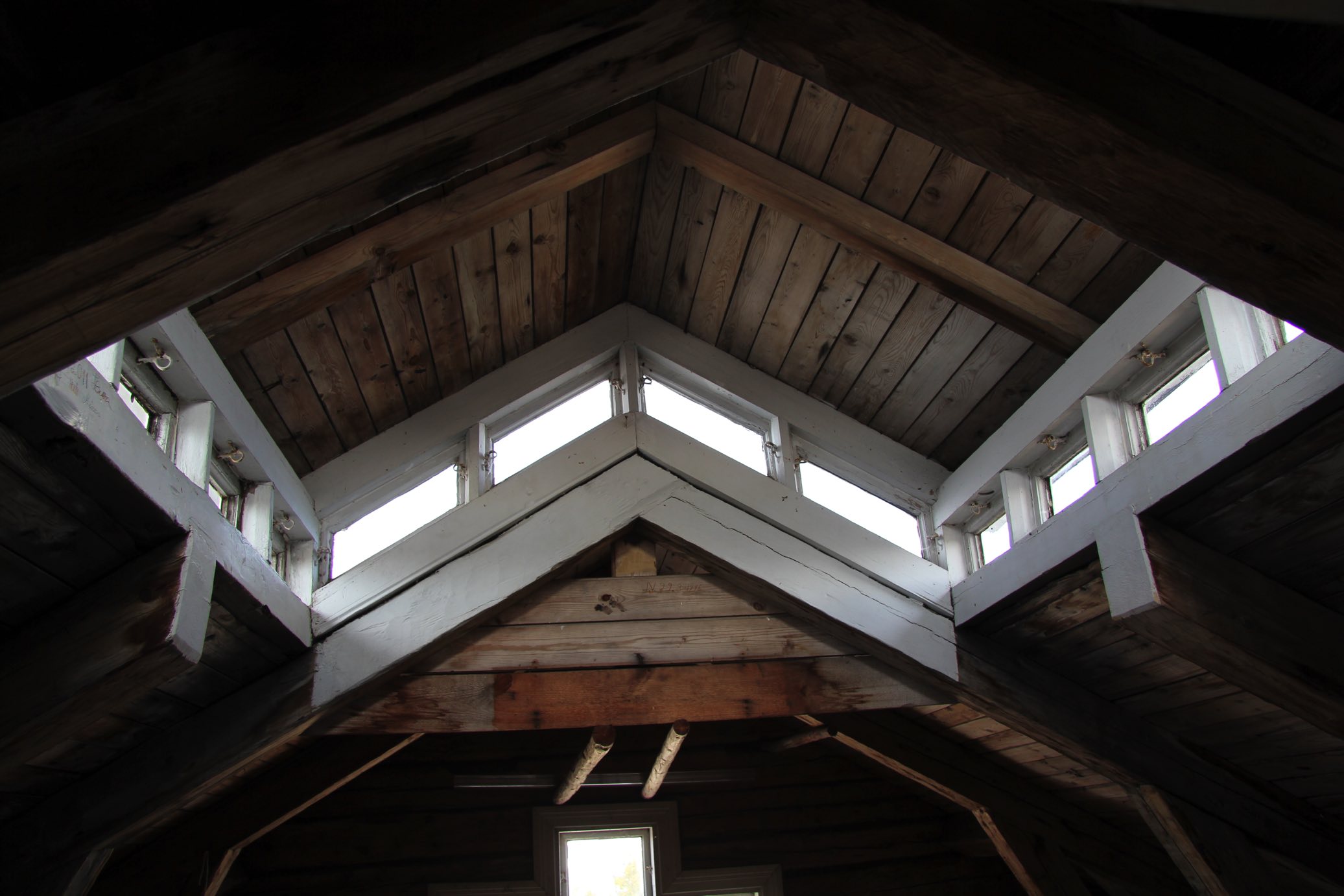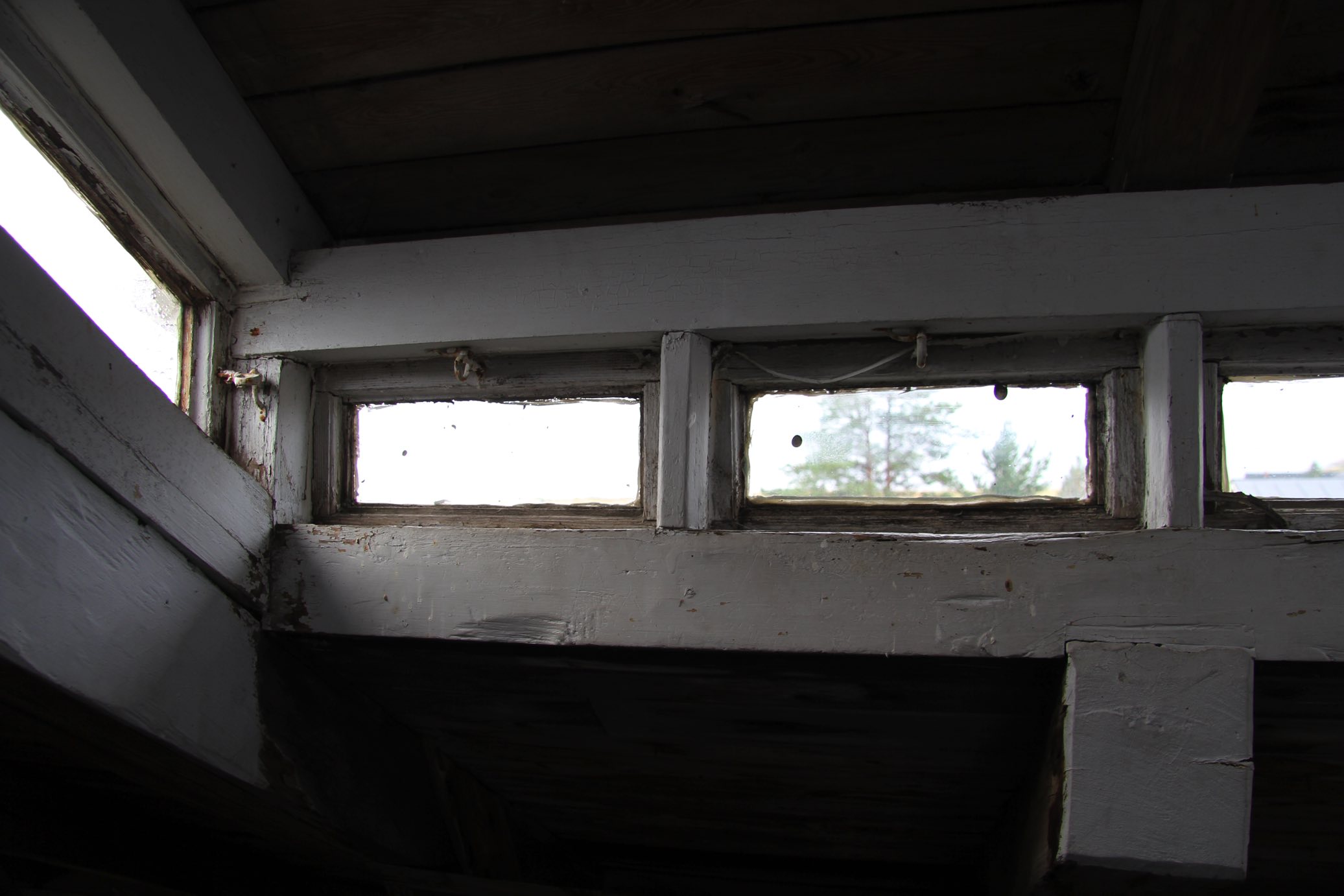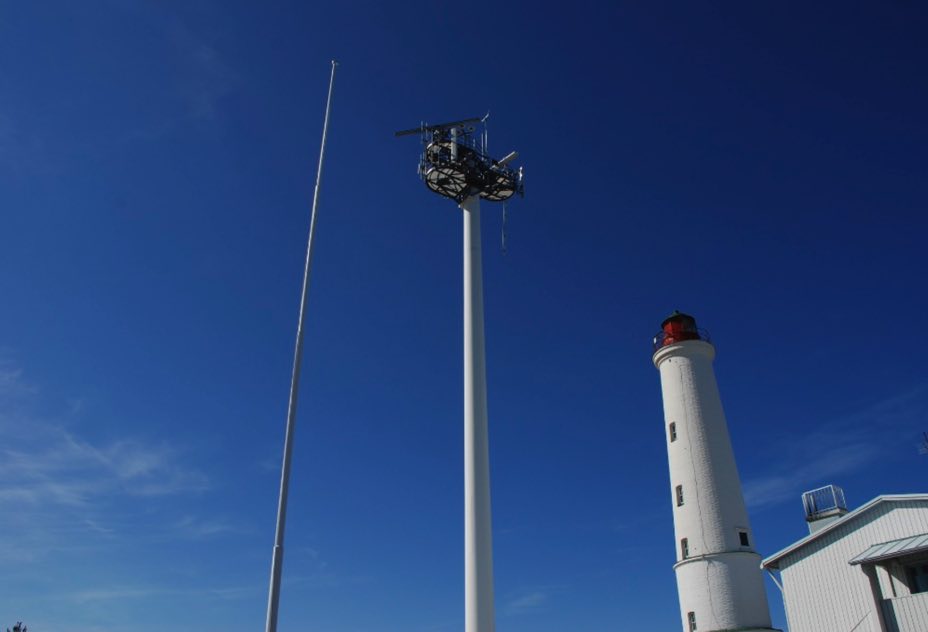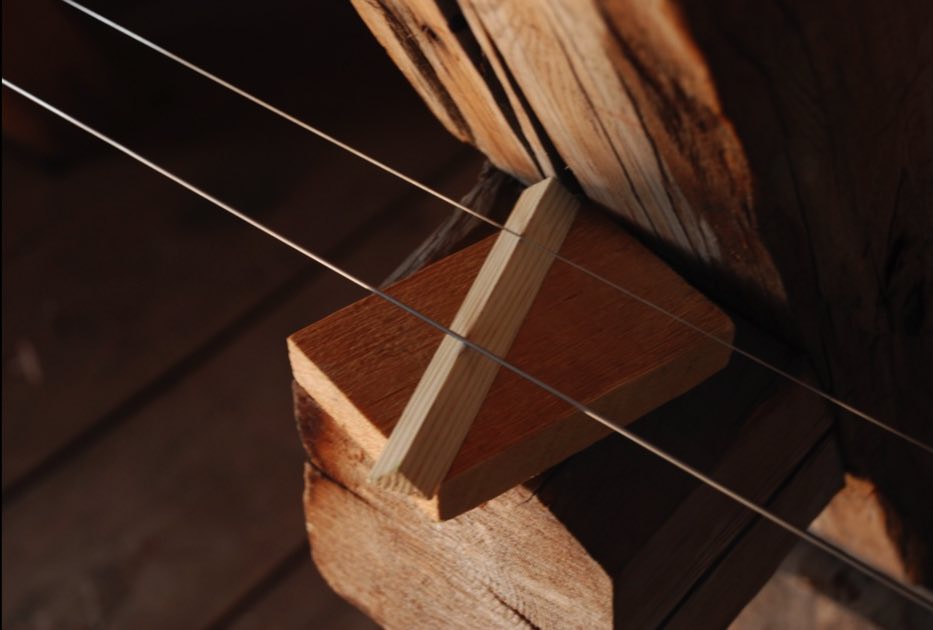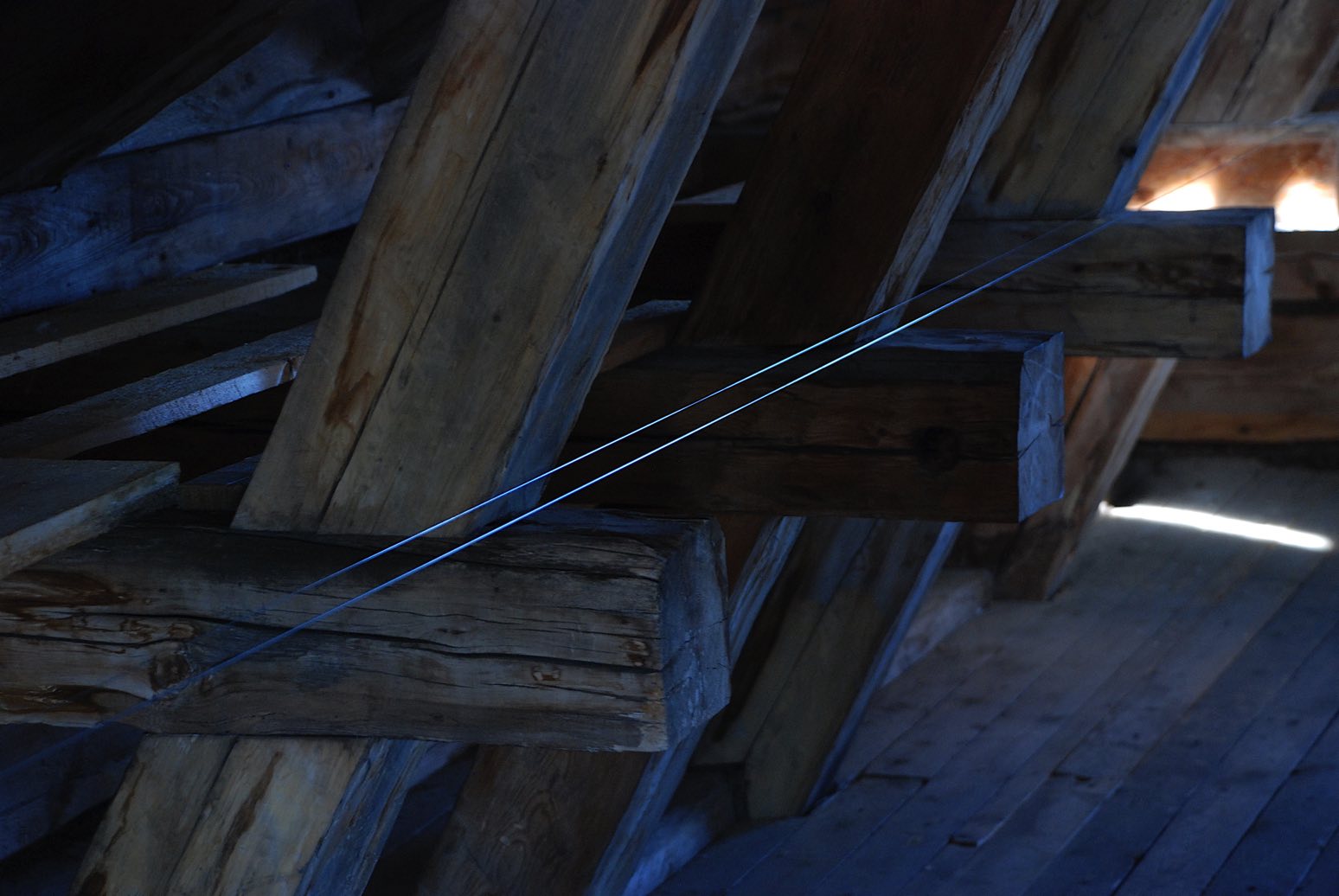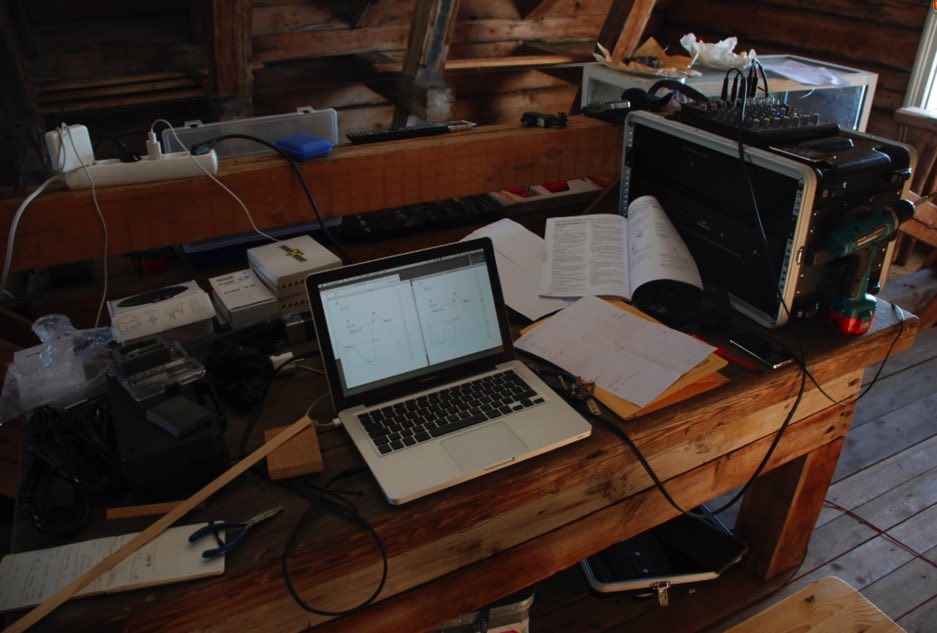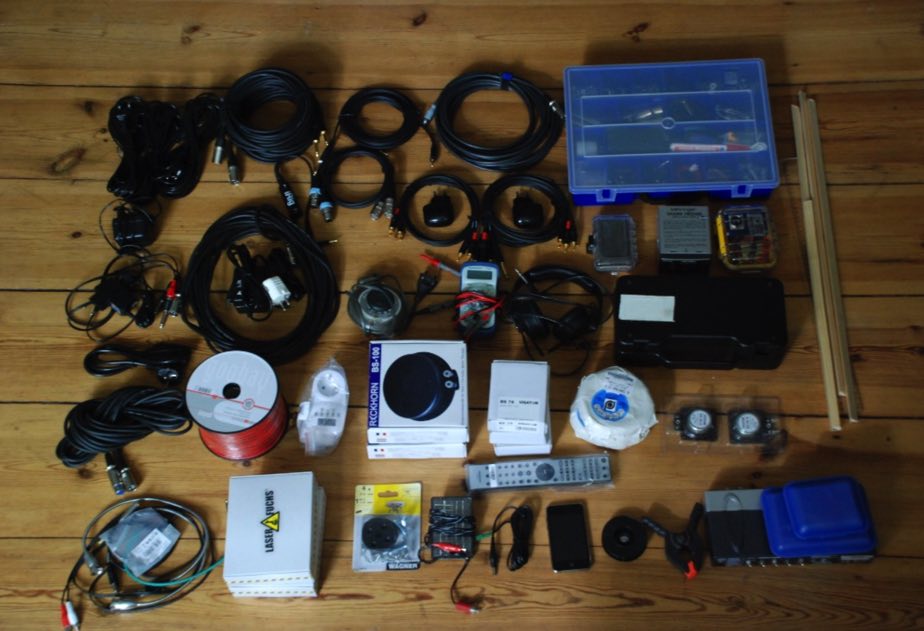tilt/ line (2012)
Marjaniemi is the western shore destination in Hailuoto, mainly used in summer time after the ice has melt. During spring and autumn time there is relatively little traffic and visitors, during summer we see high traffic and holiday business flourishing and in winter time very few people reach the spot at all. The hotel on location is closed most of the time too.
The house owned by the community is a 3 level building housing tourist information office in Marjaniemi, Hailuoto, Finland. It is a former pilot station and the Bothnian Bay Research Station of the University of Oulu.
The second level is a rarely rented student accommodation and the upper floor is a raw unused wooden room, what used to be a weather observing space.
Hai Art in collaboration with the community and through initiative by Ari Nurkkala, the Mayor of Hailuoto is developing a sound room in Marjaniemi.
Reflecting on the location – the history of the place as a weather observatory as well as the local surrounding and it‘s climate conditions and peculiarities the work approaches the festivals topic ‚wind as context‘ and experiments with the sonification of the environment
The project takes inspiration from two directions; the Aeolian harp (instrument played entirely by the wind) known in the ancient world already and first described by Athanasius Kircher (1602–1680) in his book ‚Phonurgia nova‘ (1673) (top) and the fascination for long string instruments and all the phenomena of natural (fundamental) frequency mode, harmonics, standing waves, resonance, pitched overtones etc. in vibrating strings. Here especially Alvin Luciers piece ‚Music On A Long Thin Wire‘ (1977) (bottom).
But instead of using an oscillator driven magnet as in Luciers original piece the constant wind-energy-caused micro vibration of the wooden roof timber construction is rendered to activate the string(s). The project uses an accelerometer (motion detection sensor) to pic up those frequencies from the roof construction. These devices are normally used as measurement sensors in industrial applications and are designed to pick up very low frequent structurally-born microsome activity below 20Hz - the lowest frequency humans can hear. This signal gets filtered and amplified in a higher frequency spectrum above the perception border and played back to a transducer unit activating the strings.
The attic of the building was left as untouched as possible and just installed two sets of long strings, tuned to the resonant frequencies of the timber construction (around 440 Hz).
Between the strings and the timber roof construction a dynamic feedback loop is generated which is constantly modulated by the random wind energy. The whole space becomes a resonating structure like the body of a wooden instrument and one can observe the many phenomena occurring in vibrating strings - shooting sounds like in upper electricity cables for trains, rhythmic frequency patterns ranging from a short reverb to longer echo sounds, higher pitched natural overtones, a rich variety of slides and frequency shifts.
